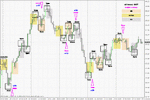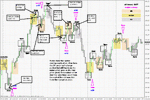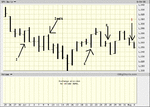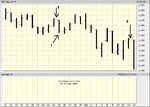hwsteele
Experienced member
- Messages
- 1,227
- Likes
- 182
I decided to start this thread to talk about how I use time with price in trading. I have looked over Trade2Win and have not found much of anything about time that comes close to how I personally use it with price. I AM NOT TRYING TO TELL ANYONE HOW TO TRADE. I am just laying out my methods for all to see. When I explain something about time and how I use it I will give MANY examples of what I'm talking about. I don't believe theory is good for much in trading UNLESS YOU CAN PROVE IT. To prove something takes more than one or two hand picked charts that makes a theory look good.
Now my favorite market is the SPX so I will be using that as my example for most everything at least to start with. I will be dealing mostly with the last six months of data. When I give and example I will show how I use it not only once or twice but many times. And not only many times but all consecutively. If it does not work out I will show that also not just all the pretty stuff.:-0
PLease feel free to ask questions or make comments on what you see posted here but PLEASE let's keep it nice. If you just don't like what I am saying then maybe you should read something else.:cheesy:
Now my favorite market is the SPX so I will be using that as my example for most everything at least to start with. I will be dealing mostly with the last six months of data. When I give and example I will show how I use it not only once or twice but many times. And not only many times but all consecutively. If it does not work out I will show that also not just all the pretty stuff.:-0
PLease feel free to ask questions or make comments on what you see posted here but PLEASE let's keep it nice. If you just don't like what I am saying then maybe you should read something else.:cheesy:





